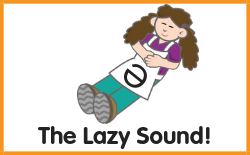Helping your child make the leap from knowing a few sounds to blending them into words can feel challenging. In this guide, Katherine Wood shares practical tips and fun, at-home strategies to support your child’s early reading journey.
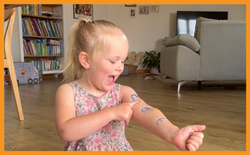
Helping your child make the leap from knowing a few sounds to blending them into words can feel challenging. In this guide, Katherine Wood shares practical tips and fun, at-home strategies to support your child’s early reading journey.

In every classroom, there will be high-flyers who need extra challenge – but how can you stretch them without the headache? Shirley Houston shares her practical solutions for differentiating your phonics lessons to meet the needs of these high achievers.
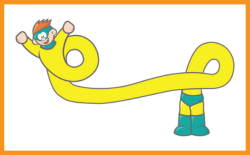
The ultimate Phonics Hero engagement tool – our free wall display kit is here to help! This blog post gives you everything you need to set up an engaging, customisable display that celebrates your students’ progress. Plus, we’ve included tips and tricks to make the process super simple.
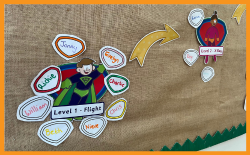
Ari referred to them as “the fuzzy sounds,” which his teacher explained are actually “voiced sounds.” But what exactly distinguishes these fuzzy (voiced) sounds from their smoother (unvoiced) counterparts? Shirley Houston provides a clear explanation and practical tips for identifying these sounds, along with fun activities to help both children and adults sharpen their listening skills.

Think you know your vowels from your consonants? Think again! Shirley Houston takes a look at when a consonant is a vowel, and wh(Y)!

Whether you’re a seasoned teacher or a newbie, you’ll want to stay alert to common phonics pitfalls, from not paying enough attention to spelling to always practising the same skill at the start of your lesson. Lesley Clarke lists her top 10 ‘don’ts’ of phonics lesson planning and teaching – and explains how to fix them!

The term ‘mastery’ is used in nearly every teaching curriculum, but what exactly does it mean? What does phonics mastery look like? And once students have achieved it, how do you help them sustain it? Shirley Houston explains how to master…mastery!

It’s a hop, skip and a jump away from 2024, when many Australian schools will be adopting systematic and explicit phonics. Literacy consultant & former teacher Lesley Clarke shares her top five tips from 24 years of supporting English schools in implementing government written phonics programmes. A must-read for leadership teams!

Tick-tock, tick-tock…the clock is ticking and there’s geography, life skills, maths and phonics to get through today! Shirley Houston explores how much of the school-day you should ring-fence for teaching phonics.
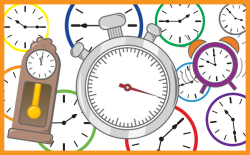
With over 160 dialects spoken worldwide, English is a wonderfully diverse language. But what’s a teacher to do when one child says “to-may-to” and another “to-mar-to”? Shirley Houston explores key differences between accents in English and offers advice on respectfully navigating these differences when teaching reading and spelling.

From Sydney to Seattle the Science of Reading is taking centre stage. And nonsense words have a starring role! You might be wondering: What are they? Why should I be using them? And, where do I get the words from? Phonics Hero CEO Katherine Wood provides no-nonsense answers to these questions!
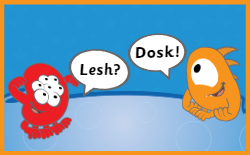
The NSW Department of Education has put out its third (and hopefully last) suggested sequence of phonemes and graphemes for K-2. We are adding it to Phonics Hero for 2023; here’s what we’ve tweaked to get it classroom-ready!
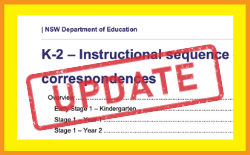
Hindsight is beautiful thing! Experienced phonics teacher and trainer Santina DiMauro takes teachers through what she wishes she knew all those years ago, so her hindsight is your foresight.
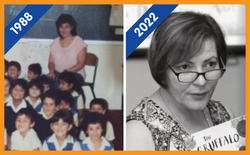
The English-speaking world is FINALLY coming to a consensus that systematic, synthetic phonics is crucial to learning to read and spell, but when should you stop teaching phonics? When do you move children on from ‘learning to read’ to ‘reading to learn’? Teacher Shirley Houston discusses.
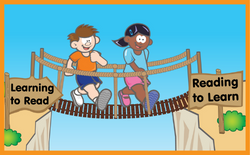
Shirley Houston explains the logic (alongside some fascinating history facts) behind w-controlled vowels and gives teachers easy ways to help in their recall.
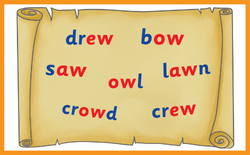
Did you miss our free webinar on the new NSW Phonics Scope and Sequence?
Fear not! This month’s blog post gives you the 1.5 hour recording and summarises the key take-aways from this hugely popular session. Everything you need to know about the NSW phonics curriculum changes.
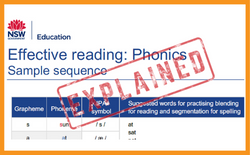
Synthetic phonics has its own terminology; grapheme, phoneme, vowel team, the list goes on! It’s important that teachers understand and easily recall the key terms.
We’ve listed the 13 definitions your teachers need to know and included a fun phonics quiz along with printable handouts for your next professional development session.

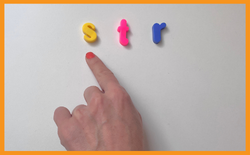
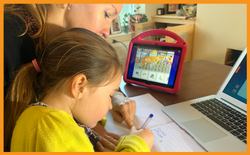
As the school year progresses, students start to fly through the basic phonics code – until they come up against the alternative spellings and it hurts even your head! How do you teach and embed the alternative spellings so that students’ spelling becomes more accurate? Teacher Shirley Houston explains.
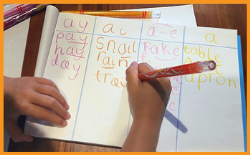
As you read this, you are not sounding out each word – you are automatically reading the words. This is automaticity; it frees up your working memory to comprehend what’s written and is our end goal for the children we teach to read. Teacher Shirley Houston explains how to systematically teach phonics to ensure every child achieves automaticity and becomes a skilled reader.
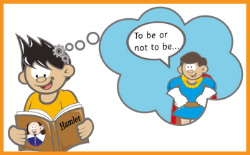
Quick and accurate spelling comes with solid segmenting skills. But like the 44 phonemes, these need to be taught – not ‘caught’. Teacher Santina explains why segmenting skills are so critical and offers her top classroom activities.

It’s often assumed that native speakers have a natural advantage over second language learners when it comes to learning to read in English, but is this really the case? Teacher John Martin shares his experience and learnings from his Hong Kong classroom.

Cognitive Load Theory helps explain why the reading progress of some students is slower than expected. Once the theory ‘clicks’ for you, your teaching will change – for the better! Teacher Shirley Houston takes teachers through the theory and practical applications of Cognitive Load. A must-read for every teacher.
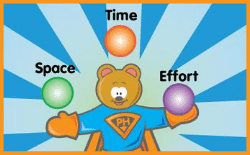
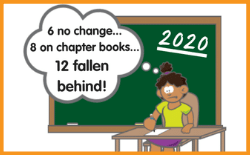
Teachers agree that handwriting is critical, even in a digital age. But what does the research say about its relationship with phonics? Santina, a primary school teacher, explores how handwriting fits alongside a phonics program and offers some multi-sensory activities to use in your classroom.

When is the right time to introduce letter names? Is it in pre-school with the alphabet song or when phonics is done and dusted? Teacher Shirley Houston pinpoints the sweet spot.
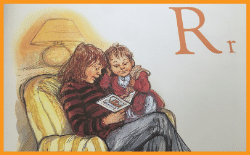
Lego? Marker? You’ve already got everything you need for our fairground-inspired Lego phonics activities. These fun reading games are a hit with both kids and the time-poor parent.
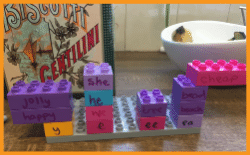
When a child stumbles over how to read or spell a word, many parents feel stumped with how to help and end up just giving the answer. Experienced teacher, Shirley Houston, shows parents how to help when their child gets stuck.
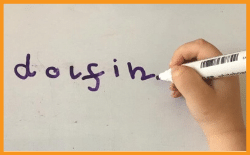
Are you a little flummoxed with how to help your child learn tricky words? Read on for home-ready, easy activities that make learning these irregular, high-frequency words fun for both little and big kids!
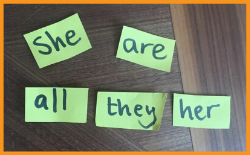
Give your Easter Egg Hunt a phonics twist by decoding the clues to find the chocolate treats. We’ve made the cards and done the thinking; all you need to do is the hiding (and maybe a bit of munching)!
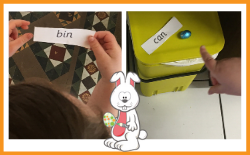
Every child loves a treasure hunt! We’ve designed this version, with phonics in mind; decode the word to find the object. Download our free resource.
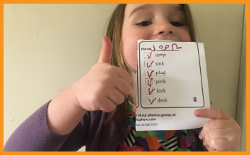
How do you get students to start reading at home before they’re ready for decodable books? Teacher Stephanie Brighton shares her school’s simple, effective (and pocket-sized) solution to bridging the home reading gap, complete with free print-outs.
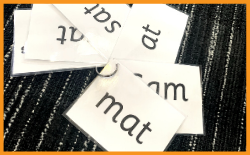
What are the R Controlled Vowels and how do you teach them? A thorough explanation, plus ideas, resources and tips to ensure you effectively teach these sounds.
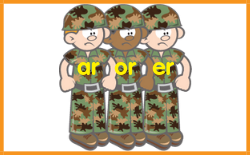
Phonics Hero CEO, Katherine Wood, shares her favourite phonics activities to keep up childrens’ progress during the Christmas holidays with downloadable worksheets, creative ideas, and resources for parents of budding readers.

Phonemic Awareness is the strongest predictor of reading and spelling success. The schools who achieve incredible reading results are often those that have honed their student’s phonemic awareness skills. This blog post explores what phonemic awareness is, and how it sits alongside phonics. It also provides teaching ideas to incorporate it into your lessons.

As adults it feels like we learn to read by sight, but it’s a lot more complex than that. Guest blogger, Marnie Ginsberg, explains the most compelling and well-researched theory of how learners acquire the ability to read English words. It’s not just what we ‘see’ on the surface!
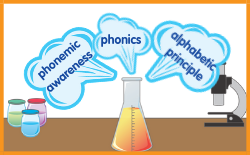
Tricky words, like ‘the’ and ‘was’, often trip up teachers and students with their rare spelling choices. Shirley Houston explains tricky words, the steps to teach them systematically and explicitly, and offers ideas and free resources to put this into practice.
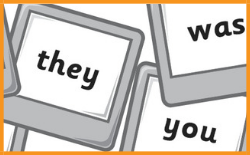
High levels of engagement and using Phonics Hero continuously throughout the year are the key to success. Account Manager, Michelle Haines, takes you through her top tips on how you can ensure everyone is using, loving and achieving fantastic results with Phonics Hero.

How do you teach a child to read at home? After creating Phonics Hero, the pressure was on for our CEO, Katherine, when it was time to teach her own child to read!
Katherine takes parents through her personal journey of teaching her daughter how to read. She describes how she applied the 5 critical steps: rhyming, introducing sounds, oral blending, using phonics to read the first words and finally, practising to make perfect!

Blending is a crucial skill that every child needs to start reading unknown words. If a child can’t blend – they are going to struggle with reading. Teacher Santina explains blending, how to teach it and how to support children for whom the blending penny is not dropping.
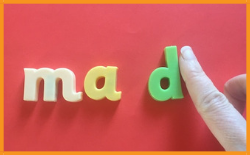
Decodable books/readers are a firm favourite in the UK and are slowly inching their way into Australian and US classrooms. Primary school teacher and phonics trainer, Santina DiMauro, gives teachers a step-by-step guide on how to use decodable books in the classroom.

Over the years, logic, emotion and research have frequently clashed in the debate on the advantages and disadvantages of ability grouping. Shirley Houston takes a look at the pros and cons of grouping by ability for spelling.
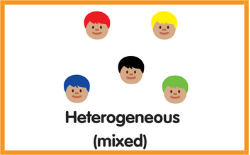
Even with all the enthusiasm in the world, if you don’t know the fundamentals of synthetic phonics, you will trip yourself, and more importantly your child, up in learning to read. Our CEO takes parents through what they need to know to support their child. Look out for the free PowerPoint for teachers to use.
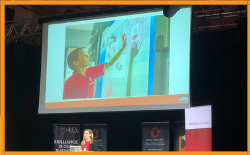
Teacher Shirley Houston, takes you through how to build the ultimate phonics lesson plan: effective practices, step-by-step instructions and a free template to take your phonics lesson to greatness!
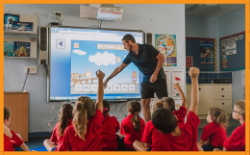
The best teachers of reading start by teaching oral blending and segmenting skills first: lessening the cognitive load on children and making the leap to reading and spelling with letters all the easier!
Learning support teacher, Shirley Houston, explains oral blending and segmenting and gives you the step-by-step ‘how to’. Plus, you’ll find heaps of free resources included!
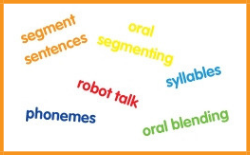
Vowel teams are probably the most common source of reading and spelling errors as one vowel sound may be represented by as many as 6 different vowel teams. Teacher Shirley Houston breaks down the vowel teams and how to teach them!

How pronouncing the sounds can go wrong and ideas to ensure you are teaching them correctly.
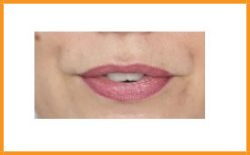
The Phonics Check is controversial because it includes nonsense words such as “flep” and “shem” but it’s testing a very critical skill – blending. Why an Australian Phonics Check is important and what it could look like.

The schwa can be a cause of confusion and frustration in spelling and reading for a student. Teacher Shirley Houston will give you a simple way to explain it and some tips for helping students to decode and encode words containing a schwa.
